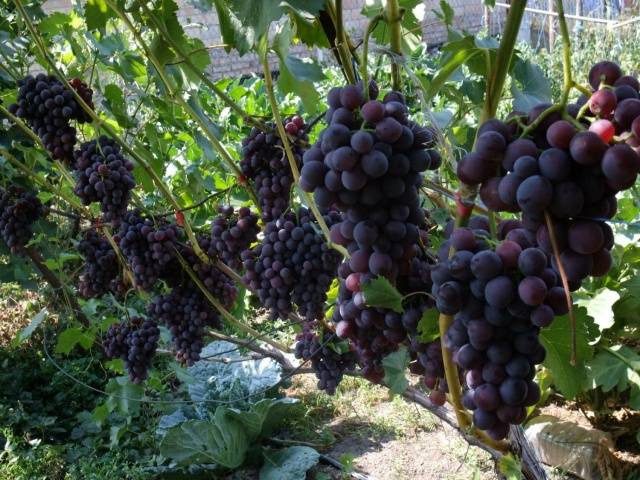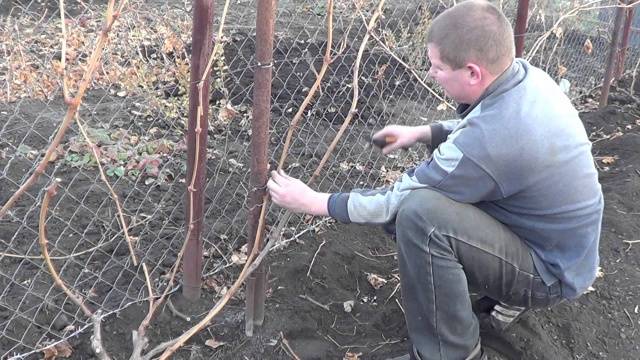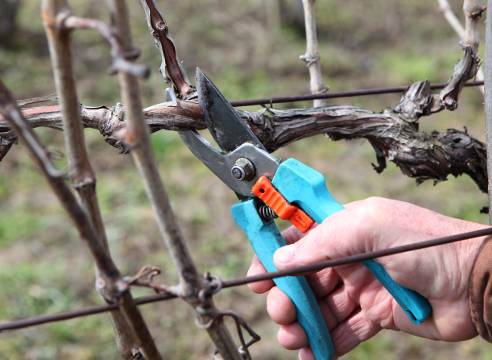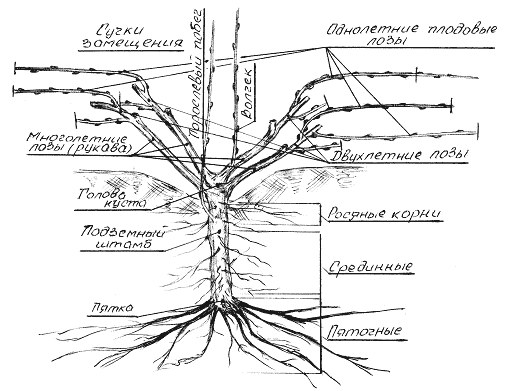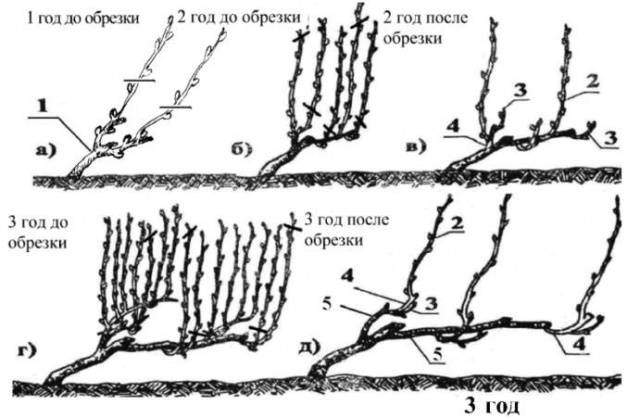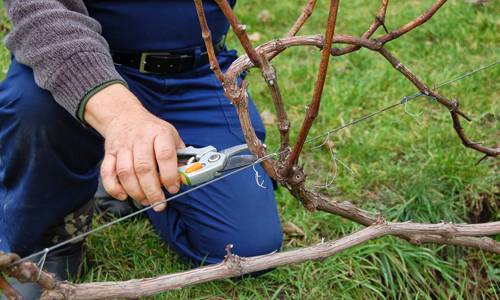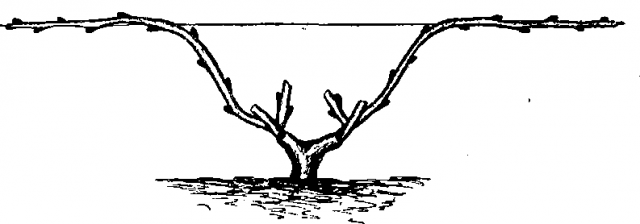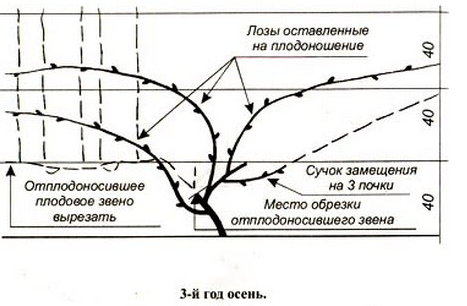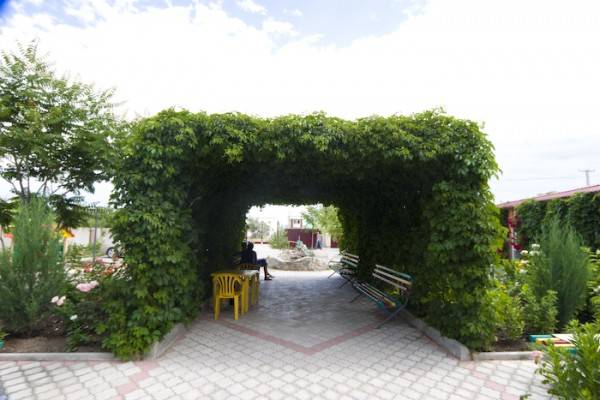Content
Some gardeners in central Russia strive to grow grapes. This thermophilic culture in a rather cool climate requires special attention. So, in the fall, the vine must be pruned. This allows you to improve the health of the plant, to get larger and sweeter berries in the future. There are many ways to prune grapes. The choice of this or that option depends on the age of the shrub and some of the characteristics of the grape variety. Find out details about when cut grapes in autumn in the middle lane and how to do it correctly, can be found further in the article.
Why you need to prune your vineyard in the fall
Grape growers in ancient Rome noticed that pruning the vine favorably affects the yield of the crop and the taste of the grown fruits.
Today, even novice gardeners are trying to prune their plants, because it allows you to:
- increase crop yield;
- make the berries larger and tastier;
- form a beautiful, neat bush;
- accelerate the process of fruit ripening;
- to carry out the healing of plants.
Thus, vineyard pruning will be beneficial for absolutely any variety. But why is it better to carry out the procedure in the fall, and not in the spring? And the fact is that pruning in the spring causes considerable stress on plants. They lose a lot of juice and energy to restore the bush. This leads to a decrease in yield and a delayed ripening of fruits.
It's time to prune the vine
Autumn in central Russia can be quite long, so it is important to determine the exact time when you need to prune the vine. And it is recommended to do this in two stages:
- The first stage is to remove weak, diseased shoots. Such superficial cleaning of the plants is recommended to be carried out immediately after the grapes are harvested. At the same time, you should pinch the young shoots of the vineyard.
- Deep pruning of vineyards is carried out 2 weeks after the plants have shed their foliage. In this case, the air temperature should not be lower than -30C. In the process of pruning vineyards, you should adhere to the universal patterns of plant formation. On their basis, it is recommended to draw up your own plan according to which the work will be carried out.
To prune the vines, you need to stock up on pruning shears or garden shears, a small hacksaw. It is recommended to wipe the instrument with alcohol or manganese solution before use.
Important Rules for Pruning Vines
It is very important not only to prune the vineyard in a timely manner, but also correctly. This is especially true of novice wine growers who are just starting to grow a crop and are still little familiar with the basic rules of vine formation. For them, the following points must be emphasized:
- When pruning shoots, you should always leave a small stump (2-3 cm) above the peephole. In this case, you can be sure of its safety.
- The older and thicker the shoot, the deeper it should be pruned. Branches older than 5 years should be removed completely.
- You need to prune the vine in such a way that the cuts are only on one side of the vineyard and "look" into the bush.
- Young vineyards are formed according to their age, following the schemes suggested below.
- In old vineyards, replacement eyelids are determined, which are pruned as short as possible and fruiting shoots, the body of which must be preserved.
- With short pruning, only 2-3 buds are left. Long cropping means keeping 10 or more eyes.
These simple rules are the basis for any vineyard pruning. They should be known and used by every gardener who has his own shrub.
Formation of young vineyards
It is very important to properly prune the vines in the early years of cultivation. This will allow the formation of a fruiting arm and accelerate the growth of the green mass of the plant. Correct pruning in the early years is the key to a good harvest in the future.
Depending on the age, young vineyards are formed according to the following rules:
- A one-year-old vineyard is pruned almost completely, leaving only 2-4 buds and a small stump. Young, fruiting shoots will develop from them next year.
- A vine at two years of age will have 2-4 main shoots. In the fall, some of them need to be pruned, leaving 2 buds each. The remaining shoots are only slightly shortened, leaving 4-10 eyes.
- After 3 years of cultivation, replacement branches are formed in the vineyard, on which 2-3 eyes are left, and the main shoots of fruiting arms, consisting of 10-12 buds.
This will make the cut bush stronger, however, the moment of harvest will be postponed for another year.
The principle of the formation of young vineyards in the first years of life can be found in the picture below. As a result of correct pruning, after 3 years, the plant forms 3-6 main arms, which are capable of producing a crop.
For beginners in gardening, a video lesson can also be useful, in which a specialist tells in detail about all the basic rules for the formation of young vineyards:
Pruning an adult vineyard
If during the first three years the vineyard was looked after properly, then the further formation of the bush will not be particularly difficult. In this case, you can adhere to one of the formation schemes, which will be described below, or simply use the basic principles of pruning:
- Shoots that have borne fruit in the current year should be removed completely.
- Cut the lowest branch on the sleeve, leaving 2-3 eyes and replacing it with new shoots.
- Fruit-bearing arrows are cut into 5-10 buds.
- Shoots 10-12 cm thick are called fattening. They need to be removed.
Particular attention should be paid to pruning fruiting arrows, which in future years should please with the harvest. After pruning, they must be covered, and when grown in the southern regions, they must be tied to a trellis.
With severe winter frosts, the upper buds may freeze out, but in general the shoot will remain alive and fruitful.
Vineyard Formation Schemes
There are several developed technologies, schemes for the formation of vineyards. The choice of a particular scheme depends on grape varieties, region of cultivation and other nuances.
Guyot technology
The method consists in preserving one or two main fruiting arms. In the first and second year, the vineyard is pruned according to the principle described above. In the future, one or two fruiting arrows are left. They are tied to a horizontal wire. If two arrows are left, then they must be directed in opposite directions.An example of such a formation can be seen in the picture below:
An example of pruning a vineyard using Guyot technology can be seen on the video:
This video will allow even a novice gardener to understand the basics of pruning a vineyard in the fall.
Fan-shaped method of formation
The proposed method of forming a vine is similar to the above described Guyot technology. The only difference is that in the process of growing on the bush, not 1-2, but 3-8 fruiting arms are left.
To implement this method, it is necessary to leave 2-3 eyes on the shoot in the first year of cultivation, in the fall. In the second year, 2 more eyes are left on the main shoots. In the third year of cultivation, the main shoots are launched on horizontal supports. On weak shrubs, 3-4 sleeves are formed; on adult, strong vineyards, up to 8 sleeves can be left. An example of fan cropping can be seen in the video:
and in the picture below.
Arbor pruning
This type of trimming is used if there is a stationary support in the form of a gazebo or arch. It will be quite difficult to remove the vine from such supports for the winter, so the method is suitable for southern regions, frost-resistant varieties or girlish decorative grapes.
With the arbor technology of forming bushes, the one-year-old vine is cut in the usual way, and in the second year, the fruit-bearing arrows begin to be directed upward. The subsequent pruning of shoots is carried out in an arbitrary way, since the method is aimed more at decorating the site, and not at obtaining the maximum yield. You can appreciate the excellent decorative qualities of the arbor method in the photo below.
Conclusion
For aspiring winegrowers, it may seem like pruning a vine is a complicated and incomprehensible business. It is for them that we tried to answer in the most detail the questions when it is necessary to prune grapes in autumn, how to do it correctly and what methods of vine formation exist. The provided graphic information and video clearly allow you to familiarize yourself with all the intricacies of the procedure. Growing grapes is a noble business that requires some special knowledge, skills and time.
